Cancelled: Daegaya Festival (대가야체험축제)
6.6Km 2022-05-09
1216, Daegaya-ro, Goryeong-gun, Gyeongsangbuk-do
• 1330 Travel Hotline: +82-2-1330 (Korean, English, Japanese, Chinese) • For more info: +82-54-950-6424
Daegaya (AD 42-562) was a nation that inhabited the Korean Peninsula around the 4th Century. The nation was a sophisticated nation that even at this early age possessed extremely high standards of culture. They created the Gayageum (a twelve-stringed traditional Korean harp). Through the relics found in the area, the nation was thought to be a powerful force in the area (now Gyeongsangnam-do). This festival offers various interactive programs to experience the nation with relic exhibition, wooden boat-making and others. Also, tourists can experience the farming culture like harvesting strawberries from the nearby rural village.
Goryeong Daegaya Festival (고령대가야축제)
6.6Km 2025-07-11
1216 Daegaya-ro, Daegaya-eup, Goryeong-gun, Gyeongsangbuk-do
+82-54-950-6427
The Goryeong Daegaya Festival is a historical celebration centered around the ancient city of Daegaya, which thrived from AD 42 to 562 as a powerful iron-age kingdom in regions including Goryeong. A must-visit is the Theme Pavilion, which highlights the World Heritage significance of the Ancient Tombs in Jisan-dong, Goryeong. The forest playground and night trekking around the ancient tombs are popular annual attractions. In addition, there are diverse performances and activities, including a 100 gayageum (twelve-stringed zither) performance featuring the representative instrument of Daegaya, experiential programs, and original musicals. The festival showcases the 520-year history and culture of Daegaya with various performances and experiences, notably the night trekking program, themed “Gobammasil,” exploring the tomb.
◎ Daegaya
Daegaya, an enigmatic ancient kingdom, flourished 1,500 years ago, nurturing its unique history and splendid cultural arts, supported by a strong iron culture, even amid the powerful states of Baekje and Silla.
◎ Gayageum
The gayageum, a traditional instrument originating from Gaya, primarily carries the thematic melody in Korean traditional music. Ureuk, a revered musician from Gaya, was named the most respected musician by popular Korean pianist Yunchan Lim during his victory interview at the Van Cliburn International Piano Competition. Listening to Ureuk’s gayageum music and visiting the Goryeong Daegaya Festival can be a delightful experience.
Daegaya Museum (대가야 박물관)
6.6Km 2022-09-13
1203, Daegaya-ro, Goryeong-gun, Gyeongsangbuk-do
+82-54-950-7103
Daegaya Museum exhibits the history, culture, and customs of the Daegaya Kingdom. The museum consists of the Daegaya Royal Tomb Pavilion, the Daegaya History Pavilion, and Ureuk Museum.
The Royal Tomb Pavilion is a 37 meter-wide dome that houses relics of the Jisan-dong Ancient Tombs, a Historic Site. It is essentially the restoration of the Jisandong Tumulus, the first large-scale sunjang (burial of the living with the dead).
The History Pavilion houses a collection of relics from the Daegaya Kingdom, while holding special exhibitions and educational activities periodically. The outdoor exhibition center displays items that showcase the ancient lifestyle.
Ureuk Museum is a dedicated to Ureuk, a Daegaya musician who invented the gayageum, a traditional Korean twelve-stringed instrument.
Goryeong Daegaya Historic Site (고령 대가야유적지)
6.7Km 2020-06-18
1203, Daegaya-ro, Goryeong-gun, Gyeongsangbuk-do
+82-54-950-7103
The town of Goryeong is four hours outside of Seoul, and features many relic sites of Daegaya around the whole district of Goryeong-gun. Around the first century, Daegaya was formed in the Nakdonggang River’s downstream area in the lower Korean peninsula, flourished independently for 520 years (AD 42~562), and declined after the 6th century. After its decline, part of it was annexed by Silla (57 BC ~ AD 935), and the rest annexed by Baekjae (18 BC~AD 60), and became a forgotten tribal kingdom.
On King Jinheung’s (reign 540~576) 23rd year of reign it became the district of Daegaya, and the name was changed to the district of Goryeong on King Gyeongdeok’s (reign 742~765) 16th year of reign.
This is the place where you can view the country’s first Sunjangmyo (tomb where many dead people were buried together), called Jisandong Gobungun, Daegaya Royal Tomb Exhibit Hall, and Treasure No. 605, the pre-eminent relics site of the Prehistoric Period called Yangjeondong Amgakhwa, and other various cultural assets.
There is a large, ancient tomb with a diameter of 20m, built on the ridgeline of the mountain, and as you go down the mountain, there are 159 other tombs of smaller scale. The largest tomb in the south side is called the Geumrim Royal Tomb, and the other large tombs near it are presumed to be tombs of royalty or aristocrats.
At the Daegaya Royal Tomb Exhibit Hall, site of the restored No. 44 tomb, you can see the ancient custom of burying the living with the dead (Royalty buried with their retainers). The dome-style exhibit hall displays Sunjangseokgwak, ironware, pottery and other various excavated relics.
Jisandong Ancient Tombs (고령 지산동 고분군)
6.8Km 2020-02-10
San 23-1, Jisan-ri, Goryeong-eup, Goryeong-gun, Gyeongsangbuk-do
+82-54-950-6363
Goryeong was the old capital of Daegaya (42-562 AD), a city-state of the Gaya confederacy that once spanned the region now occupied by Gyeongsangnam-do Province to the south of the Korean peninsula. The city of Goryeong played such a central role in the development of the confederacy that many artifacts and historic sites of the Daegaya period can still be found there today.
Some of the most prominent landmarks are the 200 gobuns (ancient tombs) that lie along the southeastern slope of Jusan Mountain in Goryeong. In ancient times, the higher and larger a tomb, the higher the social status of the person buried inside. Given this tradition and historical evidence, the largest tomb in the south has been identified as Geumnim Wangneung (Royal Tomb of King Geumnim); the other large tombs are also presumed to be those of the kings of Daegaya. The large royal tombs (over 20m in diameter) dominate the mountain ridge (the highest point) while mid-sized and smaller tombs can be found on the mountain slopes and foothills.
Historical research on Daegaya began with the excavation and partial identification of the ancient tombs of Goryeong by research teams from Kyungpook National University and Keimyung University in 1977. Excavators discovered a great number of relics—gilt-bronze crowns, swords, armor, and trinkets of gold, silver, and jade—that shed light on the flourishing culture of Gaya.
To continue to encourage interest in the history and culture of Daegaya, officials of Goryeong-gun County established the Daegaya Royal Tomb Exhibit Hall at the foot of Jusan Mountain in Gobun-gun, Jisan-dong. The exhibition hall depicts the social structure of the era through ancient customs such as burying servants alive with their dead masters.
Goryeong Janggi-ri Rock Art (고령 장기리 암각화)
7.5Km 2022-12-29
15-5, Araealteo-gil, Goryeong-gun, Gyeongsangbuk-do
+82-54-955-2201
Yangjeondong Rock Art (discovered in 1971) is a rock painting 3 meters high and 5.5 meters wide that vividly depicts the life and religion of the Prehistoric Age. Rock art from the time period was created on rocks or other planes considered to be sacred and usually carried a message of fertility. The artwork of Yangjeondong shows layered circles (symbolizing the sun and the moon), crosses (depicting the “life zone” of the tribe), and 17 masks. The artwork is considered to have been used for ceremonial purposes or farming events.
Ureuk Museum (우륵박물관)
8.9Km 2021-01-07
98, Gayageum-gil, Goryeong-gun, Gyeongsangbuk-do
+82-54-950-7136
Ureuk Museum is a museum dedicated to gayageum, a traditional Korean twelve-stringed instrument, and Ureuk, the inventor of the gayageum and a great musician. The only museum of its kind, Ureuk Museum excavates, collects, preserves, and displays pieces that help visitors more deeply appreciate the beauty and history of the gayageum.
Yeonhosa Temple (연호사)
13.2Km 2021-08-12
80, Jukjuk-gil, Hapcheon-gun, Gyeongsangnam-do
+82-55-931-2508
Yeonhosa Temple is located in Hapcheon-gun, Gyeongsangnam-do. With its back to Hwangusan Mountain, the temple faces the Hwanggang River. Designated as one of the Eight Great Views of Hapcheon, the temple is surrounded by mountains with a cliff on its back. The view of the gently flowing river from Hambyeongnu Pavilion is relaxing, even on rainy days when raindrops fall into the river.
Hambyeongnu Pavilion (함벽루)
13.2Km 2024-02-02
80 Jukjuk-gil, Hapcheon-gun, Gyeongsangnam-do
+82-55-930-3178
Included in Hapcheon's Eight Scenic Views, Hambyeongnu Pavilion was built in 1321, during the 8th year of Goryeo King Chungsuk by Hapcheon County Lord Kim. The location at the base of Daeyaseong Fortress, the pavilion offers views of Jeongyangho Lake on the Hwanggang River. The pavilion was visited by many poets, with writings from Toegye Yi Hwang, Nammyeong Josil, and Wooam Song Si-yeol hanging from tablets inside, and a rock engraved with "Hambyeongnu" in the handwriting of Song Si-yeol behind the pavilion.
Hambyeongnu is a 3-pillar wide by 2-pillar deep, 2-story pavilion, with an octagonal roof connected with a frame of five parts. The roof of the pavilion is famous in that when it rains, the water drips straight off the eaves and into the river below.
Dodongseowon Confucian Academy [UNESCO World Heritage] (도동서원 [유네스코 세계문화유산])
13.3Km 2023-01-05
726, Gujiseo-ro, Dalseong-gun, Daegu
+82-53-616-6407
Dodongseowon Confucian Academy was first established by Confucian scholars in 1568 at the eastern base of Biseulsan Mountain, but was burnt down during the Imjin War (1592-1598). In 1605, the school was reconstructed on its current site and was renamed Borodongseowon. In 1607, the name was changed to Dongdoseowon. "Dongdo" means that the teachings ("do") of Confucianism come from the East (dong in Korean). Dodongseowon is one of the 47 major Confucian academies that was not affected by Heungseon Daewongun's order to eliminate Confucian academies.
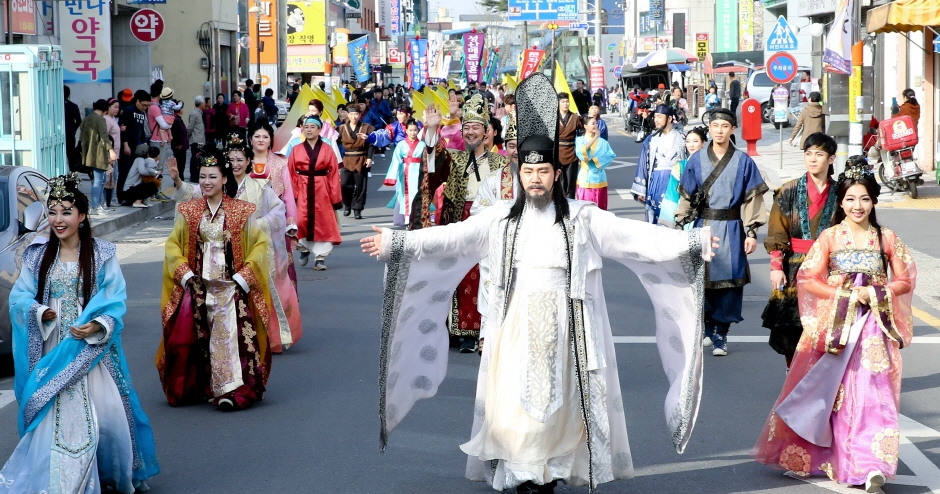

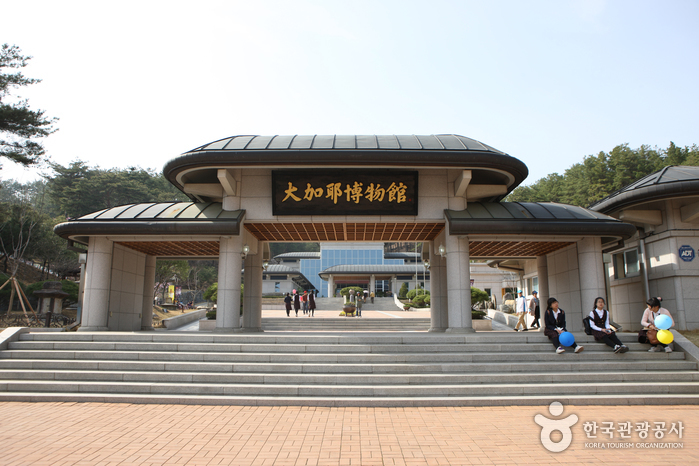
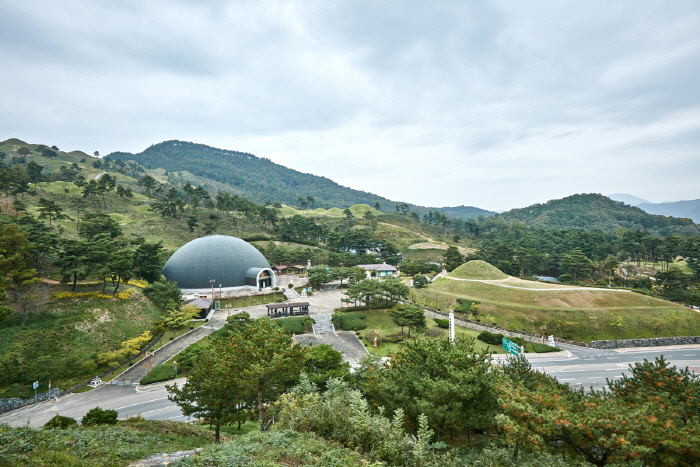

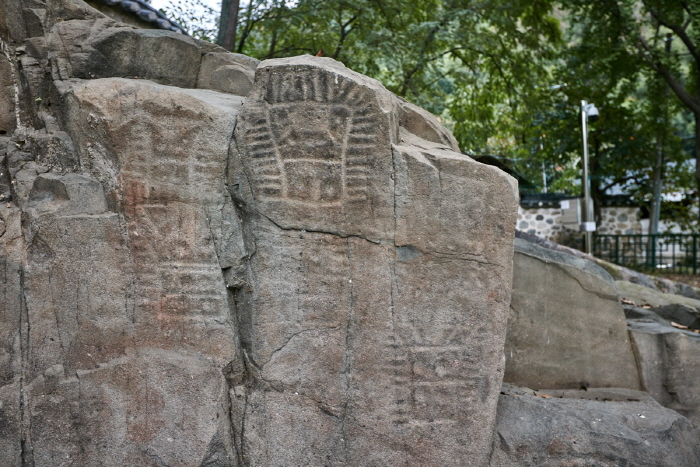
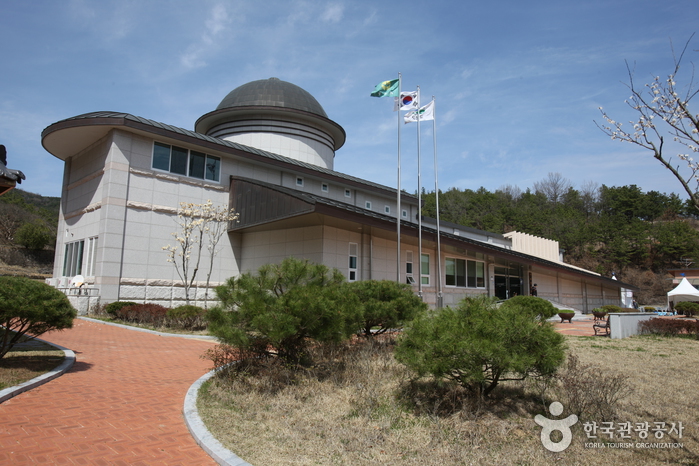
 English
English
 한국어
한국어 日本語
日本語 中文(简体)
中文(简体) Deutsch
Deutsch Français
Français Español
Español Русский
Русский